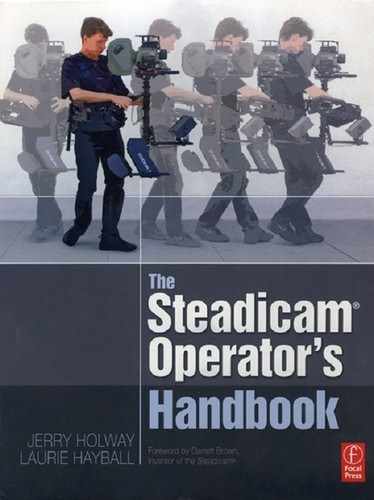How was it?
It's the big question at the end of the shot, and surprisingly, there are some really good and bad ways to answer it.
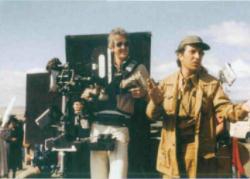
Before responding, I always try to get the okay from my focus puller, to be sure that he or she is satisfied. If there's a focus problem, there's no point yelling “Great!” and then having to retract that statement.
One answer to “How was it?” is “Great!” or wonderful, excellent, terrific, etc., delivered at a good volume with plenty of enthusiasm. It's your assessment of all the variables and clearly states that you feel production can move on.
The only other answer is, “Let's do it again. It would be really great if….” And then clearly state what you think needs to happen to fix whatever isn't great. “It would be really great if I could be 6 inches to the left so Pacino's line is delivered more to camera.” “It would be really great if that extra in the blue suit crossed earlier so we could see the hero cop a bit longer before he fires the gun.”
The “It would be really great if” answer gets everyone on the same page for the next take, and gives everyone the motivation and reason to go again. It also gives the director or production a clear sense of what you think needed improvement and the choice to move on or not if that's not important to them.
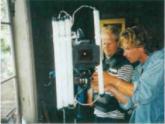

I love it when a director gives the crew the same clues. “Do it again,” without any specific directions to me or to the actors, leaves everyone without a good reason to change anything and with no new enthusiasm for the work. If the director gives the actor something new to do, fine, I know it's a performance thing, just as the actor might leant I missed my mark and his face was in profile or an extra blocked his action.
The worst answers are the ones that don't move anyone in any direction. “It was okay” leaves production with doubts. “It sucked” with bigger doubts. “Well, it might, well, yeah, in the middle, I don't know (etc.)” gives them nothing and takes up even more valuable time.
Another bad answer: “The focus was soft.” If the assistant has an issue, fine, you all need another take, but you can always improve something else about the shot. “It would be great if” while the focus puller works out his issues. Only if production wants to go forward do you say, “We might have a focus issue at such and such a point” I don't suggest you lie to production, but the reason to re-do a shot because there's a focus problem doesn't energize everyone to the next take like, “It would be really, really great if… ”
In conclusion
If there's a common trait among the best Steadicam operators, it's great passion — passion for the job, for how amazing our shots look on the screen, and for the gear. Great operators strive to be smarter, smoother, and more efficient — all to tell the story better. Exactly where the passions lie and how they are expressed vary from operator to operator, but every great operator takes that passion to the edge, pushes the envelope of possibility, and is willing to fail again and again going after the goal. They are pioneers, rebels, visionaries, and craftspeople; madmen all.
We usually end the Steadicam workshops with an evaluation of each student's “Grand Prix” shot. Side by side on two monitors, we watch the student's shot and a movie of the student doing the Grand Prix. We discuss the student's choices and all the good and the not so good things we can see in the operating. We celebrate the moments of inspiration, illuminate the errors, and find ways to improve it all. Everyone wants another take.
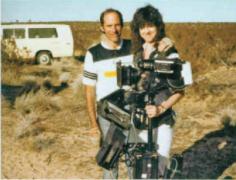
We have the review of the Grand Prix shots as a community, all together. Even the instructors are given a go and take their lumps. All of us have moments of brilliance — and lapses of framing and intent. It shows on screen when the form is off, the grip is incorrect, and the mind wanders. All of which gives us hope, because we can learn better form or the correct grips, and we can train ourselves to remember why we are on set, what we want out of the shot.
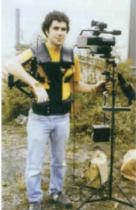
What becomes crystal clear is that the Steadicam is not some magical instrument that makes great shots, but an instrument infinitely and wonderfully responsive to the will and commitment of the operator. When the operator is inspired and focused, there's a great image on the screen.
At the very end, we welcome the students into the larger, worldwide community of Steadicam operators. We are friends, colleagues, and competitors. We own sleds and vests and arms and follow focus systems and widgets from many different manufacturers, and we enthusiastically debate, defend, and promote our gear. We invent things, try techniques, wear different clothes and shoes, and find different niches where we earn our living. It's still a relatively small number of folks, and most of us are only one degree of separation apart from each other, and from Garrett Brown, the inventor of the Steadicam.

In a cinematic world full of secrets (special filters, digital and chemical processing, lighting tricks, etc.), Steadicam operators are unique. If we find a new widget or we discover a new way of operating, we share that knowledge and insight with the rest of the community. We often disagree about the value or truth of an idea, and our passionate discussions are also informative and important for our community. This open sharing of ideas started with Garrett, and it continues through the workshops, on the web and with many books including this one.
Welcome to the community.
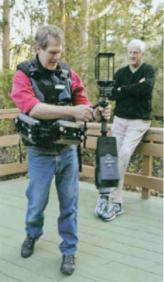
- Jerry Holway and Laurie Hayball
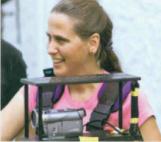
Cut. Print Great. We are moving on.
